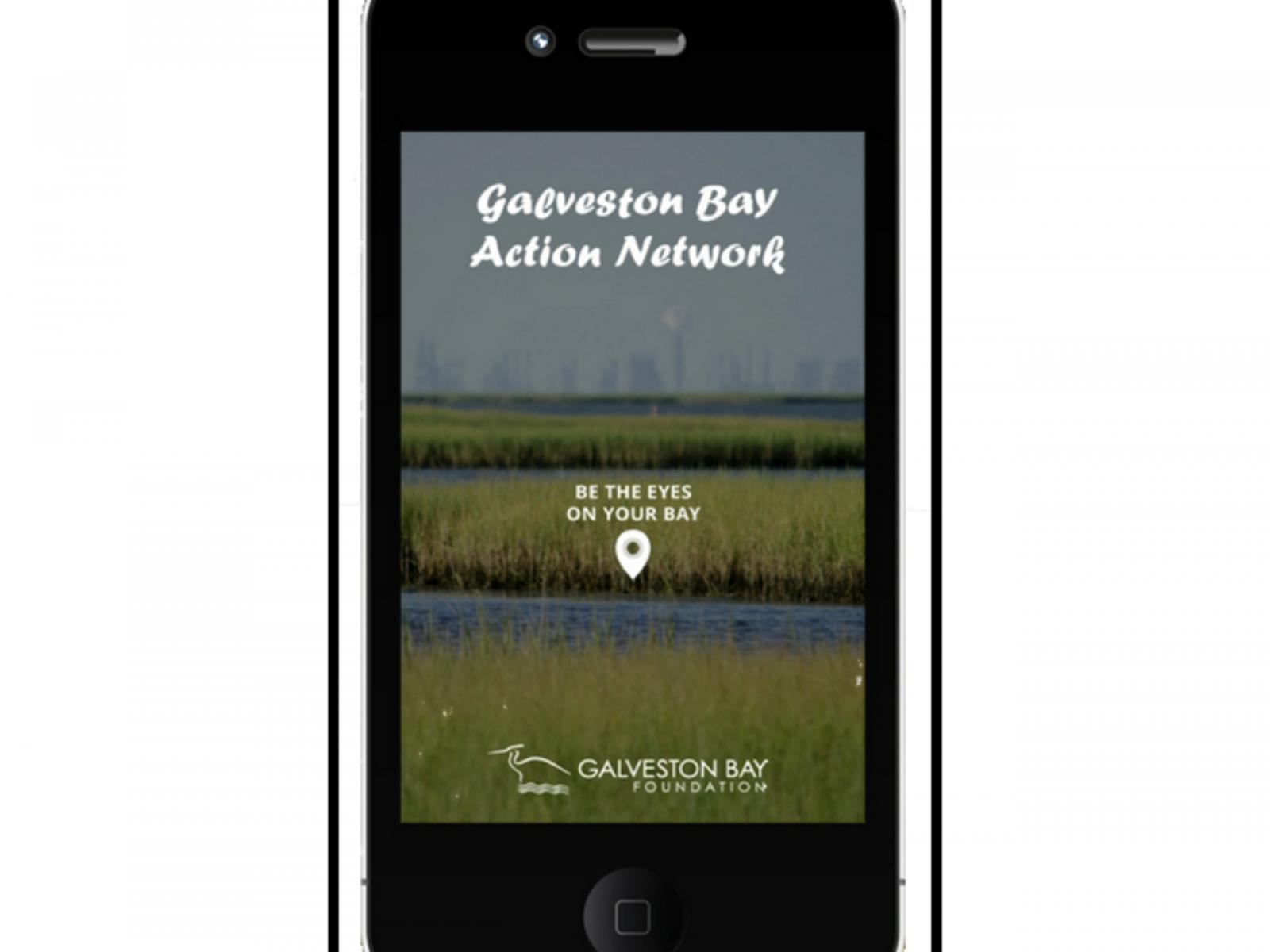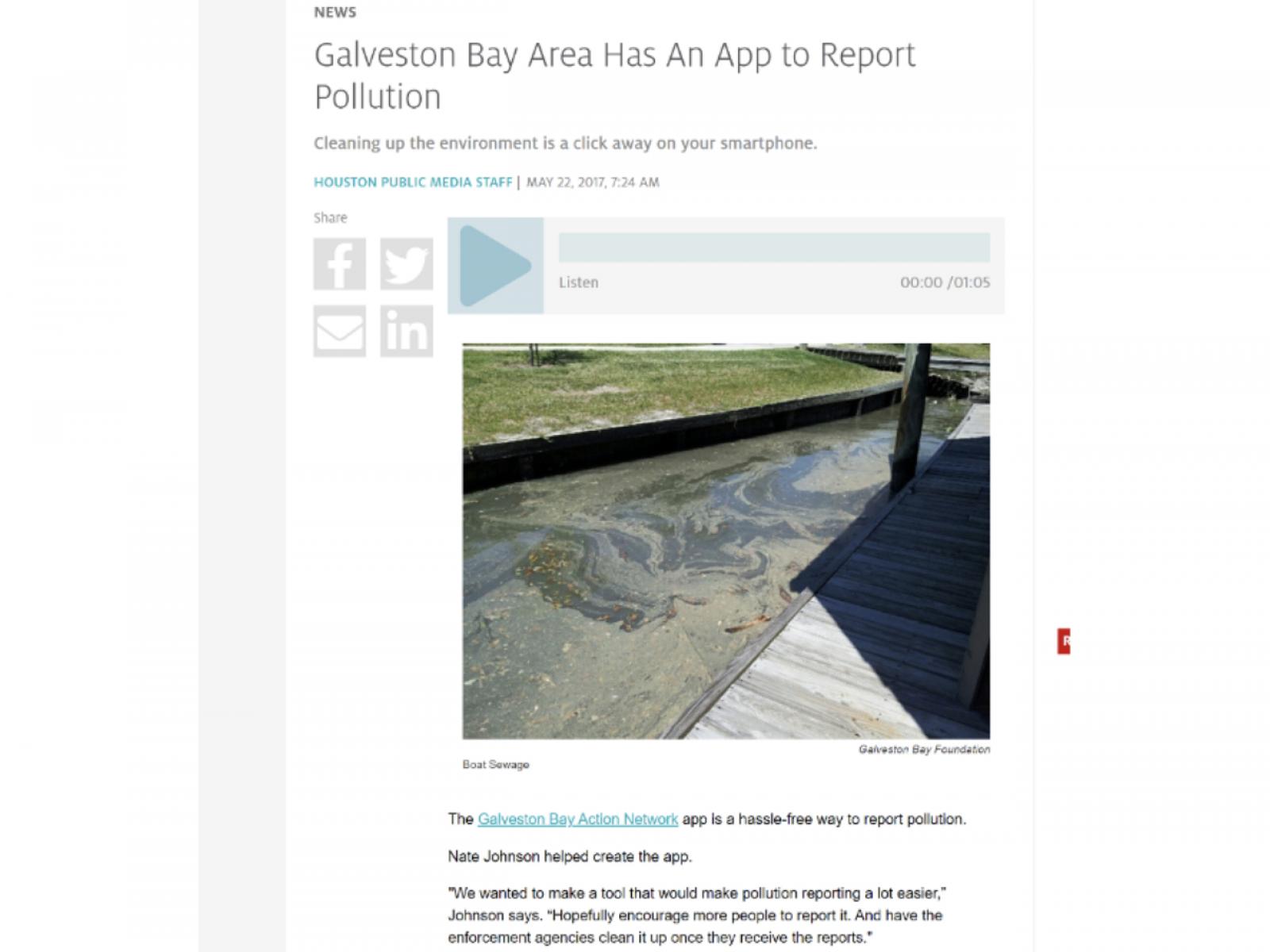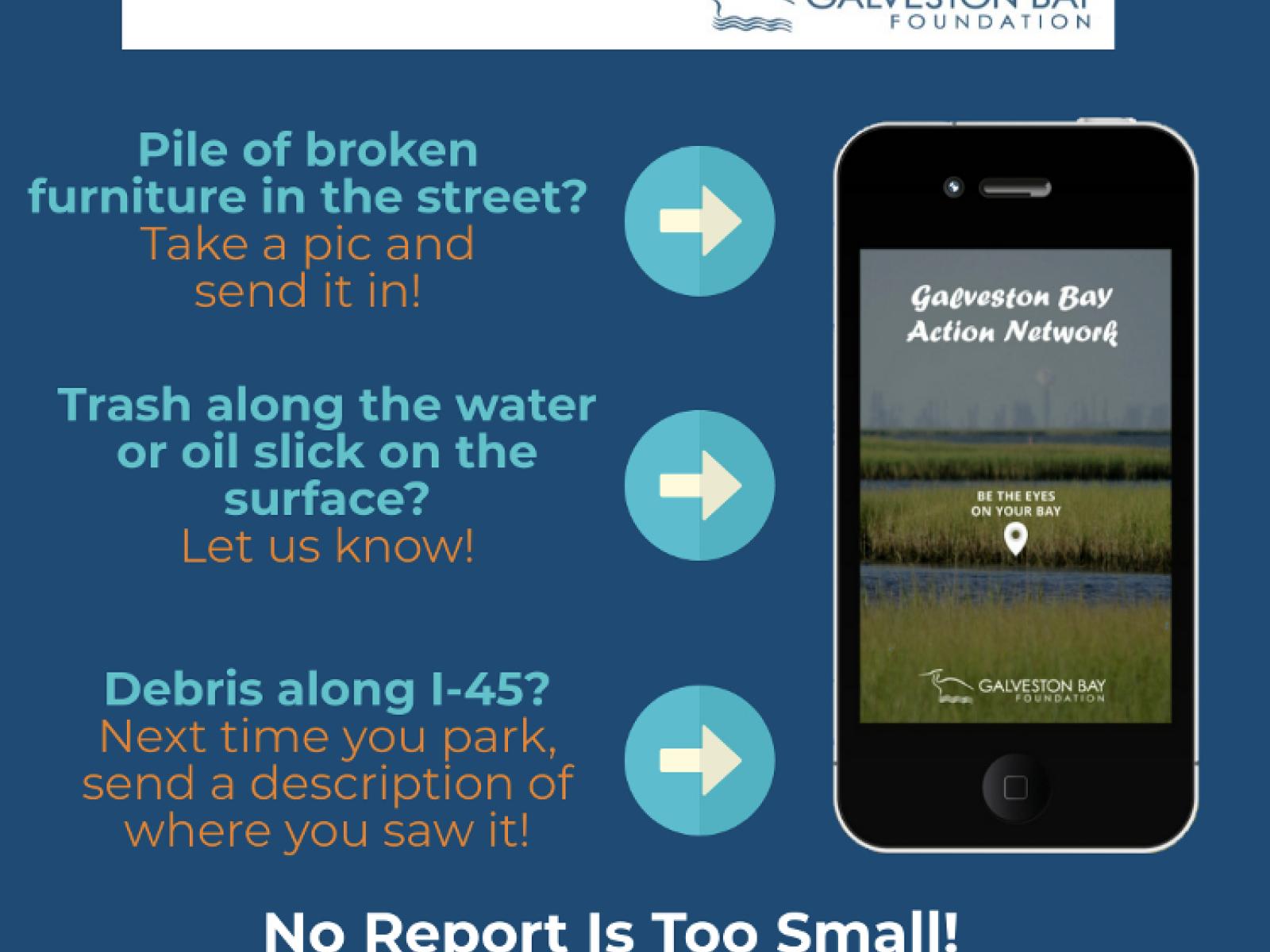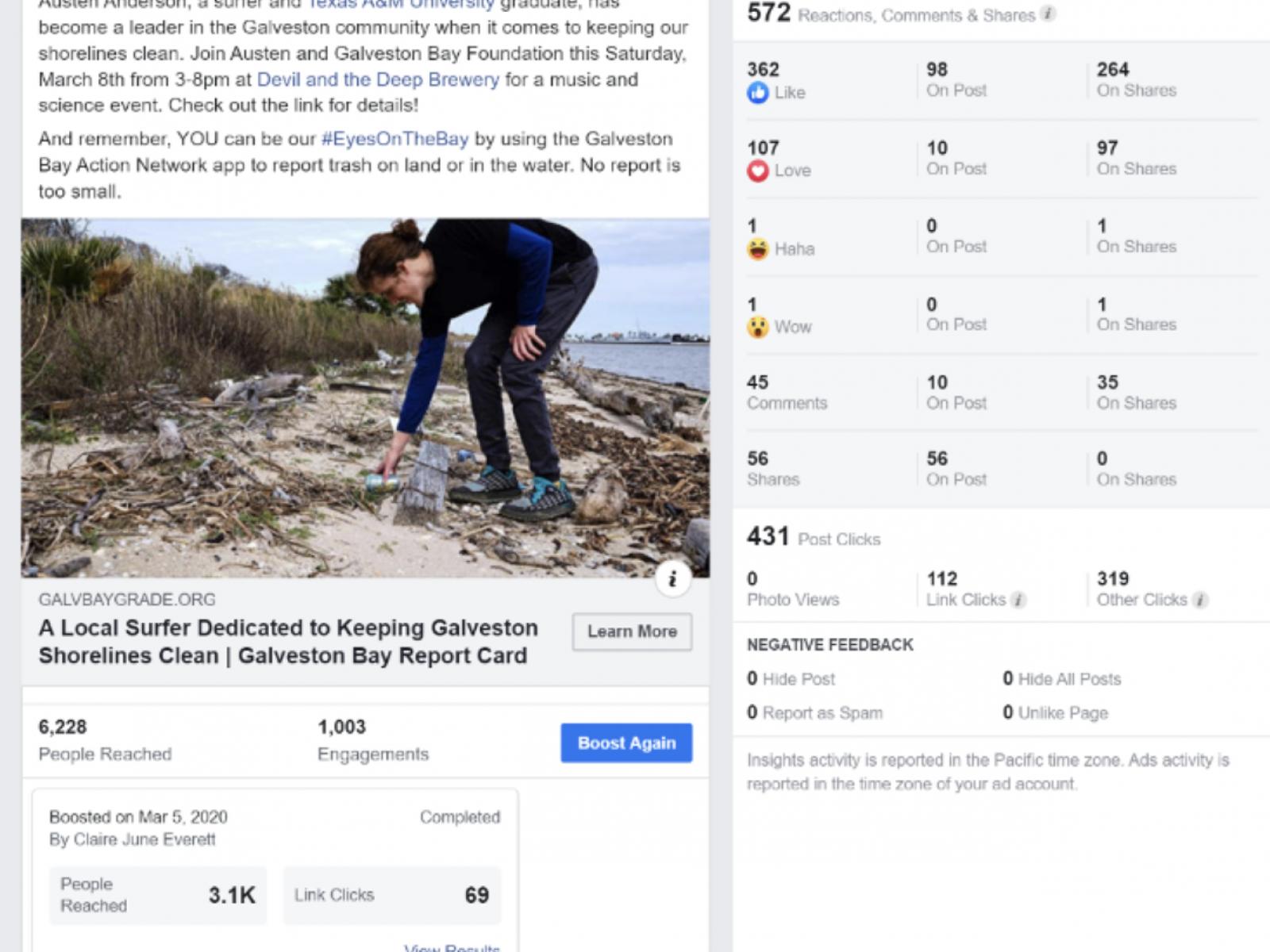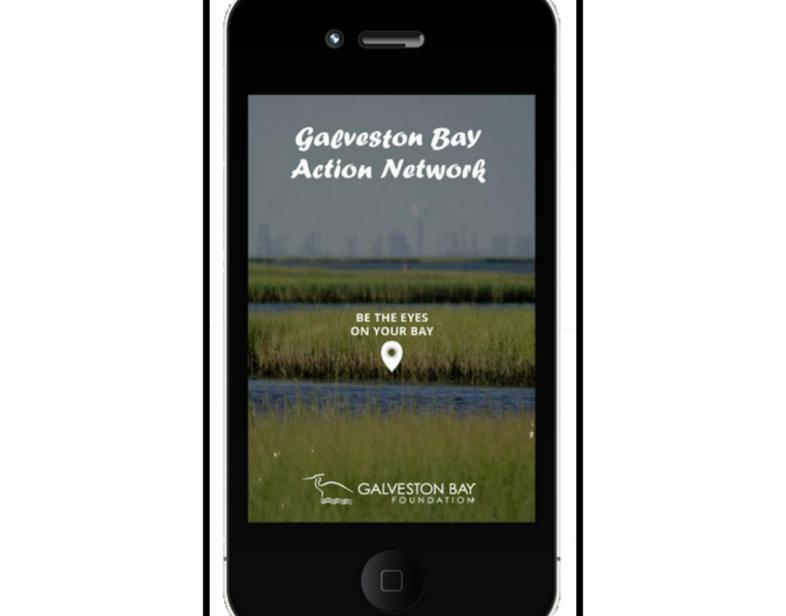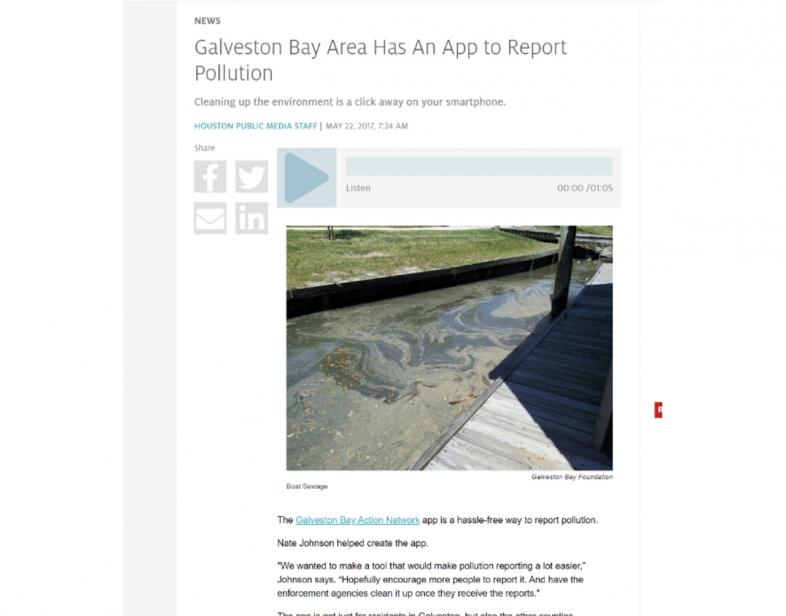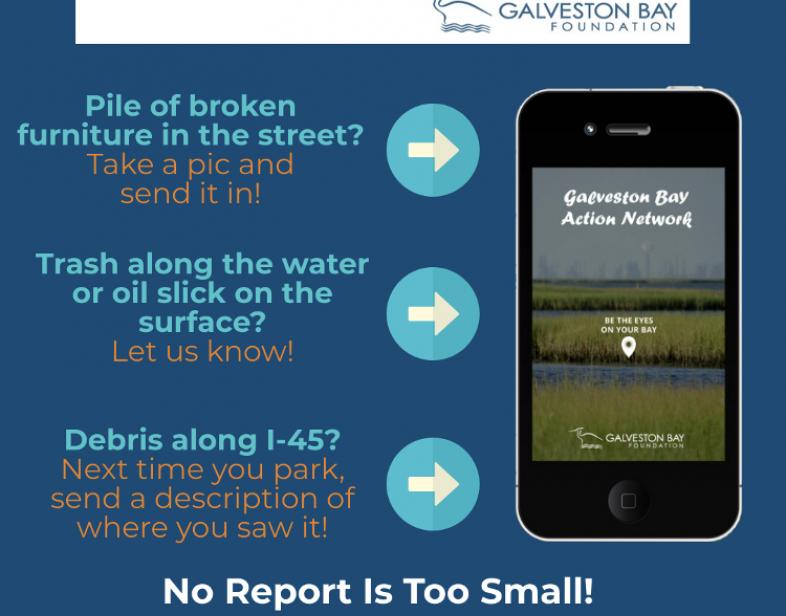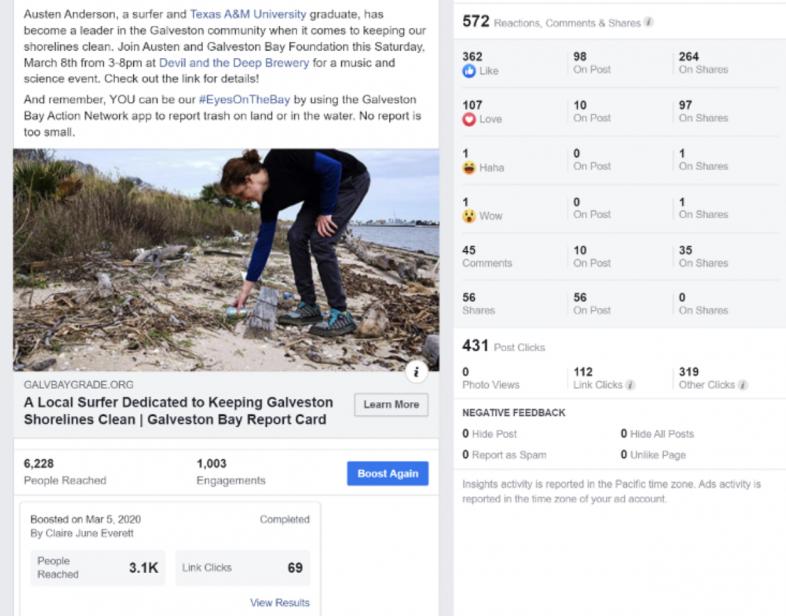An Overview Of Our Solution
The Galveston Bay Action Network (GBAN) is a free smartphone app and interactive website created by Galveston Bay Foundation (GBF) to provide an easy way for residents to report pollution across 4 counties in the Houston-Galveston region so it can be cleaned up as soon as possible. Users can make a report in just a few minutes, under one of 13 categories and include images, location, and a description. Emails are automatically sent to the responsible municipality or agency based on the type and location of the pollution reported. These partners frequently work together and can even reach out to the resident if they have questions regarding their report. GBAN has helped keep pollution out of Galveston Bay and its watershed through community action and has increased residents' awareness of their connection to the Bay.
- Population Impacted: 7,000,000
- Continent: North America
姓
名
机构类型
电子邮件
背景分析
The Galveston Bay watershed includes half of Texas’ population, the 4th largest city in the U.S. (Houston), and the 2nd busiest port in the country. Given the size of the watershed, the Bay is highly susceptible to water quality issues. Galveston Bay is the 2nd highest producer of seafood among U.S. estuaries and seafood advisories are not uncommon due to industrial and residential run-off. The local economy and major industries in Texas heavily rely on the resilience and health of this 600 square-mile Bay. Waterways within the lower watershed cross through major industrial complexes, commercial shipping/fishing channels, densely populated areas, and places frequented by tourists. Populations and industry are expected to grow in Houston and the Bay’s coastal communities, leading to increased pollution potential. Heavy rain, flooding, high winds, and hurricanes are common in the area and slow drainage and outdated infrastructure regularly amplifies these pollution issues.
描述您希望目标受众采用的技术解决方案。
A free, easy-to-use, pollution reporting tool that enables the general public to send observations to the agency responsible for cleanup.
描述你的行为干预。
The GBAN tool launch was accompanied by a press release, major newspaper articles, major media spotlights, and social media advertisements that highlighted how the watershed connects the target audience to the Bay and how this tool can help keep their neighborhoods and the Bay clean at the same time. Ease of use, free app downloading, examples of pollution types, and anonymous reporting features were appealing to the community. Reports could be filed in just a few minutes to help resolve pollution in neighborhoods and keep it out of local waterways and Bay. In-person and digital outreach efforts provided information about the Bay ecosystem and the devastating impact unaddressed pollution can have on it. Testimonial videos were created where residents could share their experience using the GBAN tool. These videos, along with regularly updated informational videos and outreach materials were shared on social media, at Galveston Bay Foundation and partner events/presentations. GBAN promotional magnets and stickers were distributed to local libraries, schools, community centers and groups, municipalities, businesses, and more to encourage usage of the tool. Additionally, GBAN has been incorporated into Galveston Bay Foundation’s other programs and initiatives as a useful community resource.
使用的行为杠杆
如需要,请更详细地解释你是如何使用杠杆的。
Short videos, promotional materials, and the tool itself offer clear and concise information for downloading and using it. Promotional stickers and magnets are both informational and visible indicators that offer opportunities for social influence. GBF events offer opportunities to try reporting with staff guidance. Social media contests encourage users to take pride in their efforts by sharing their report online for a chance to win prizes. Campaigns solicited GBAN users to star in testimonial videos, showing cases of success for social influence, reinforcement, and to inspire hope in the community that there is a solution to local pollution and their frustrations at seeing it. The tool provides a shortcut for residents to report pollution, which would otherwise require many steps, making it much more likely that they will report it when they see it. This choice architecture has proven successful as many users say they never bothered reporting pollution before GBAN made it easy.
描述项目的实施。
Since heavy rains leading to flooding are frequent in the area, mitigating pollution in city streets and neighborhoods is imperative to reducing the impact to the Bay or its connected waterways. As such, it was important to create a way for people across the watershed, not just communities located directly on the Bay, to take part in water pollution prevention. GBAN helps reduce pollution in waterways and neighborhoods. Many residents in the area’s diverse population depend on the Bay for work or to feed their families. Knowing that the health of the Bay depends on pollution reduction efforts in the entire Houston area helps people understand their connection to it. The creation of the mobile app made it much easier for people to report pollution wherever they were increased reporting. Keeping the user’s information anonymous to the public helped reduce concerns of backlash from businesses or neighbors in the area that may be responsible for pollution. Another key factor in success is that people do not need to create an account when reporting, removing a time-consuming step that would likely deter many. The app and website were updated in 2020 and are maintained annually to ensure easy and effective reporting. Galveston Bay Foundation staff monitor reports and follow up with users as needed to ensure their behavior is reinforced with a resolution of the issue. Two obstacles were encountered during implementation of the program. Infrequently, reports were made that were not followed through on or passed around because the assigned recipient of the report thought it was not their jurisdiction. We overcame this by having Galveston Bay Foundation staff communicate and follow up with possible responsible parties to determine the responsible party and cleanup plan. The second obstacle is finding consistent, long-term funding. When financial resources are not available, staff are unable to dedicate time and commit resources to promoting GBAN to new audiences.
描述项目的主导者。谁在主导项目实施?
The Community Engagement Coordinator at Galveston Bay Foundation, a 501©3 conservation organization in Kemah, Texas, leads the implementation and promotion of this tool. This staff member maintains connections with partners responsible for resolving pollution issues that are reported and seeks out stakeholders that would benefit from using this tool. The Community Programs Manager oversees budgeting and major updates. Our leadership team itself does not involve youth but the tool is shared with school groups, scout groups, and community centers in curriculum that encourages them to be leaders in their community by utilizing and promoting this pollution solution.
分享参与解决方案开发和实施的关键合作伙伴。
Key partners in the development and implementation of this solution included 13 different governing bodies and organizations in the target area that automatically receive pollution reports in their jurisdictions. Other environmental organizations in the area assist in sharing GBAN as a useful resource. Key stakeholders include users of Galveston Bay, like marina owners, boaters, residents who fish or crab, wildlife enthusiasts, and industrial companies. It continues to be important to Galveston Bay Foundation to include communities that have barriers to enjoying the Bay, whether it be due to proximity, income, ability, or awareness. These neighborhoods benefit from using GBAN to help reduce pollution near their homes, and this tool has helped connect people to the Bay ecosystem. Building on partnerships with major cities in the counties and state environmental quality authorities made the automatic reporting process incredibly successful and resolving complex reports much easier. Having positive relationships and key contacts in government bodies, major stakeholder groups, and local religious groups like the Interfaith Environmental Network of Houston made sharing this tool far and wide much easier. These relationships are symbiotic, as the GBAN tool makes it easier for them to manage and resolve pollution issues in their areas, show their dedication to their community’s concerns, and empower people to easily and affordably participate in environmental protection.
谁采用了期望的行为,采取的程度如何? 解释一下你如何测量行为变化的。
Houston-Area residents across the 4 counties have filed approximately 350 pollution reports. Many users say they had never reported pollution before because they did not know who to contact or if it would make a difference but when they see pollution resolved after their report, they feel their concerns are being addressed. This reinforcement will make it more likely that residents will continue to engage in the desired behavior. Many reports have been filed in areas that less frequently engage in environmental action, such as industrial and rural communities around the Bay. Reports have also been submitted from far outside the city, in areas environmental organizations are unable to connect with regularly. This tool supports community-driven environmental action and promotes visibility of environmental issues within underserved communities. This will not only create new advocates for Galveston Bay but may also result in more community-driven environmental projects.
项目是如何影响水污染的?请详细说明并包括相关的测量方法。
The overall impact can be hard to measure quantitatively but with about 350 reports filed so far, the reduction of pollution such as trash and debris, sewage, pet waste, oil and other chemicals entering the Bay is significant. The fact that residents are more aware and willing to take action when they see pollution is incredibly impactful as well. So far, 102 chemical and sewage reports have been filed, resulting in quick action to contain and remove these contaminants. Some of these were oil and fuel spills from vessels or improperly maintained pipes that would have continued to leak contaminants into the water if not addressed. The reporting tool also has a phone number displayed with the oil reporting option so oil spills or leaks can be addressed immediately. This feature has led to quick action in 4 significant oil or fuel spill cases.
您的解决方案如何促进平等(包括种族、性别、民族、社会阶层/收入,或其他)?
The 4 counties are very diverse, with 22-43% of the population identifying as Hispanic or Latino, and 9-20% Black. The GBAN tool gives community members a chance to have their concerns addressed in areas where environmental action may not be a priority to governing agencies. Underserved populations are often disproportionately affected by environmental issues - Bayside communities likely to come into contact with impacted water or consume contaminated fish; neighborhoods built in flood-prone areas; and people that live in the shadow of Houston’s many industrial facilities. Speedy removal of trash, grease, debris, or other contamination prevents clogging of an already overburdened stormwater system. Additionally, the ability to report online provides opportunities to contact authorities that some communities may be otherwise reluctant to reach out to for historical or cultural reasons. Our free smartphone app also offers access to residents without a home computer.
社会和/或社区是如何受益的?
- The opportunity for clean and healthy communities
- Supporting and growing neighborhood activism by empowering community leaders, sharing resources, and developing networks across different barriers
- Providing opportunities for residents’ concerns to be heard and addressed in an efficient and constructive manner, leading to a more functional relationship between governing bodies and their constituents
- Bridging the knowledge gap between communities and the environment they live in
环境是如何受益的?
Due to the removal of a wide variety of pollutants, the reporting reduces long-term impacts on important coastal habitats and wildlife. Resolving trash and debris reports prevents these items from entangling animals or being ingested. Oyster reefs are also threatened. Galv Bay is an ideal environment for them and they are crucial to maintaining water quality. But they can’t thrive in contaminated waters, so keeping pollutants out of the Bay is imperative to the success of local populations.
可持续发展如何得到促进?
Since the GBAN tool offers an “Unknown” category, users can report damage to natural resources. This enables GBF and our partners to be notified of instances of wetland destruction and illegal land development. Governing bodies can also utilize GBAN to look for trends in pollution issues and improve development plans.
Additionally, GBAN connects people to their municipalities. This helps create a new generation of advocates that are informed and more comfortable confronting city officials.
可持续性:描述你的解决方案的经济可持续性。
The original development and implementation have been funded thus far by the Coastal Management Plan, a division of the Texas General Land Office, and the United States Environmental Protection Agency. The automatic reporting feature allows for minimal staff time and project maintenance costs, creating an efficient and simple solution. Due to technological advancements and time spent following up with reports, additional funding is being sought to maintain, grow, and share the program.
投入产出:实施这些活动的成本是多少?与你上面的结果相比,你的结果如何 这投资吗?
The cost for development and implementation of the app, alongside updates to the website for continuity, was approximately $20,000. Cost to design and maintain just the website could potentially be implemented by experienced in-house staff or an in-kind donation of skills and time. The cumulative impacts we have seen are immeasurable compared to the annual maintenance and update costs of about $2,000. Additional annual costs can be up to $5,000, based on staff salary, outreach materials, any major updates to the tool needed, and promotional costs.
如何能将这个解决方案成功推广在其他地方?
Although upfront costs for website and smartphone app development can be expensive, the ease of use and automatic reporting aspects make it a worthwhile investment for cities, municipalities, and environmental agencies with a low long-term maintenance cost. It allows them to monitor pollution issues in real-time, potentially prevent much more costly resolutions, and save staff time and efforts addressing and following up on residents’ concerns.
